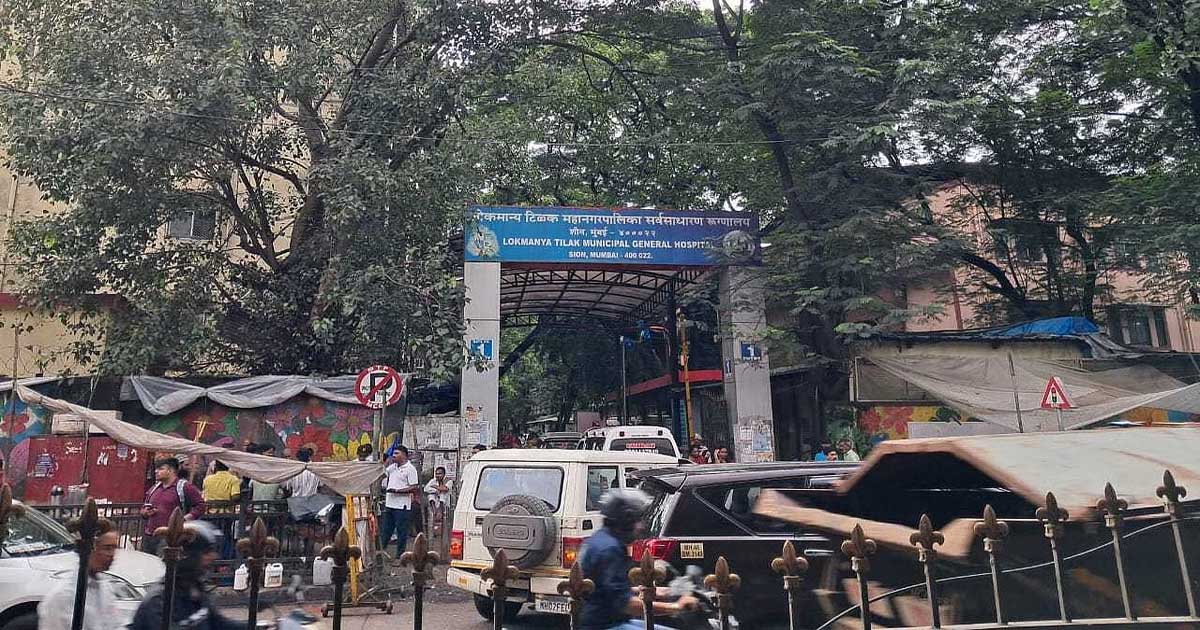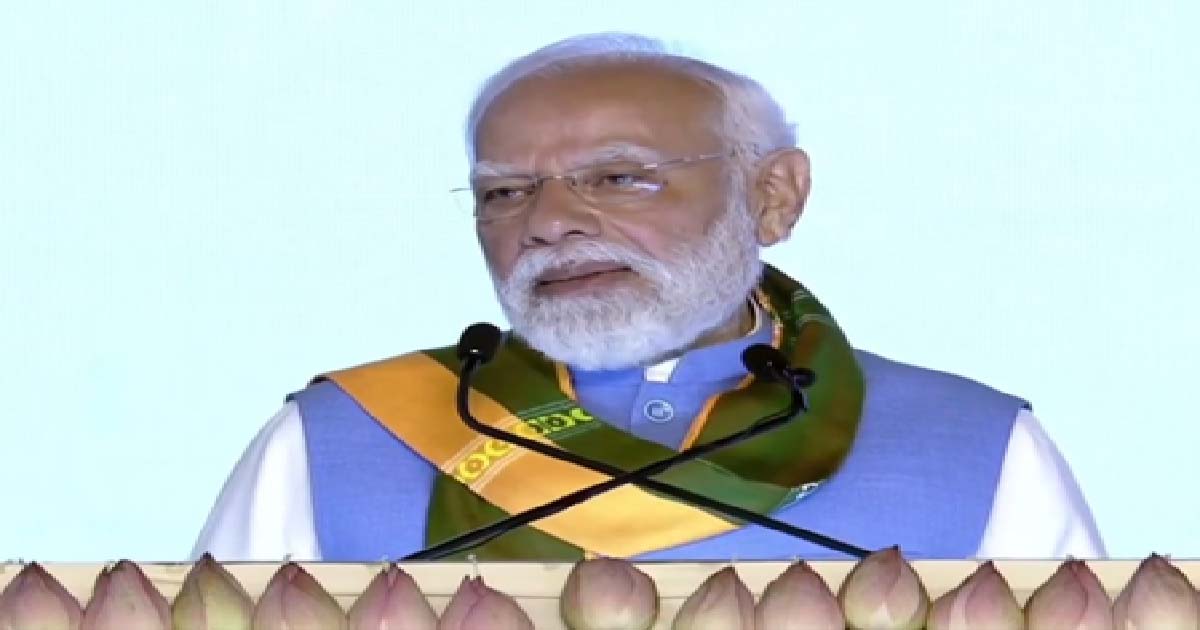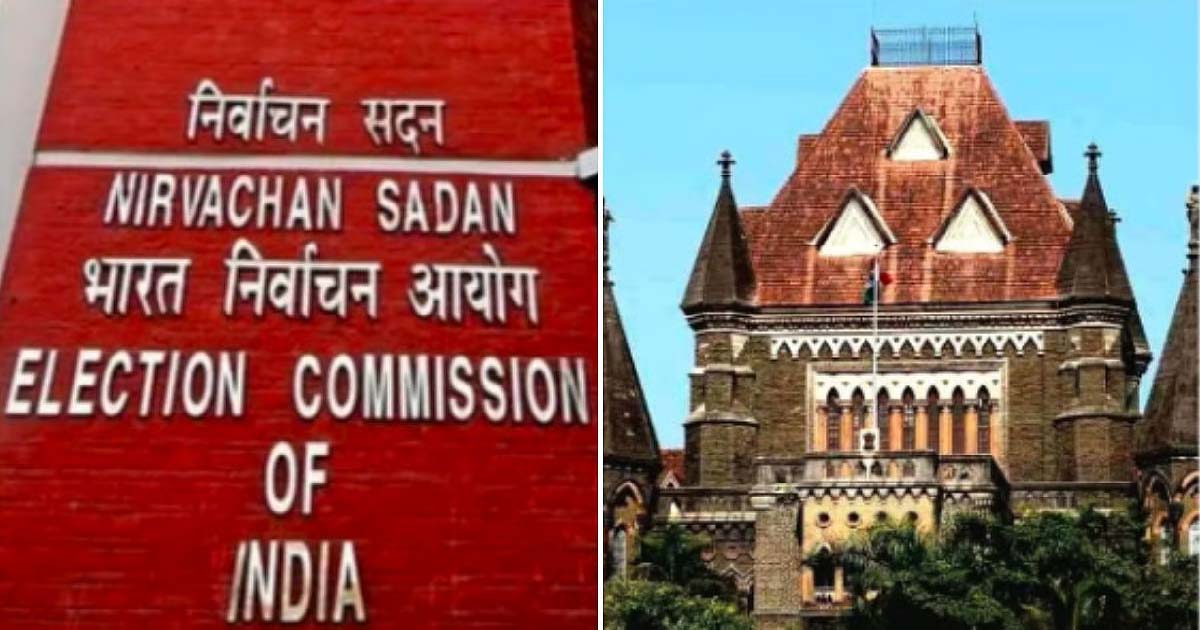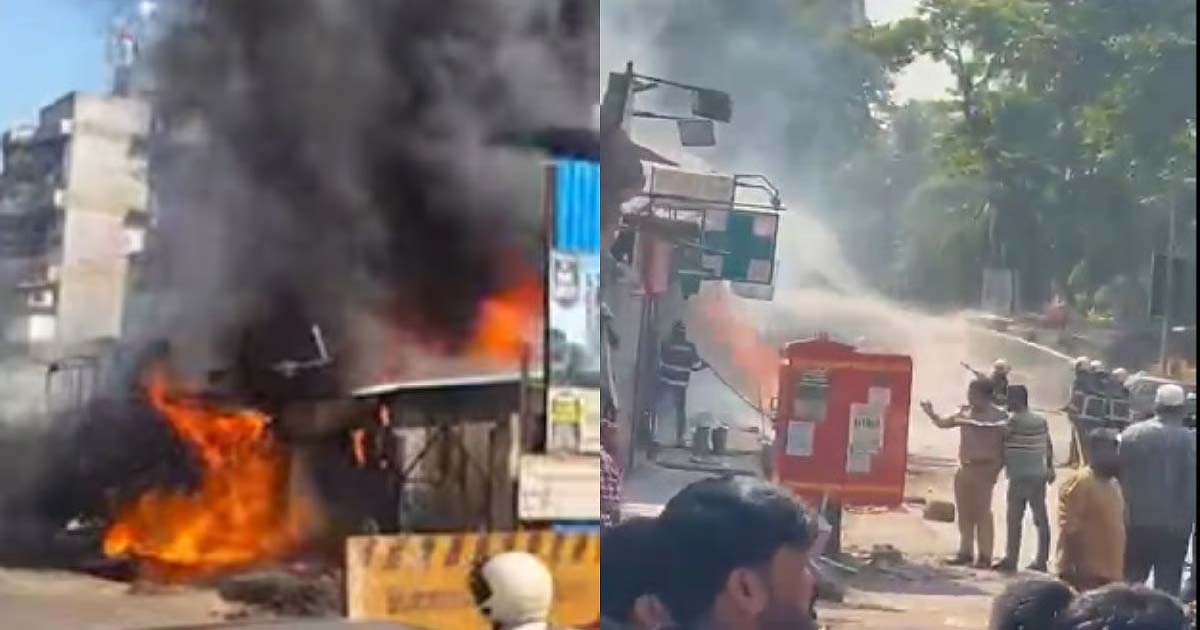National News
Mumbai Ailing Hospitals Part 11: Sion Hospital Struggles With Medicine Shortages, Overcrowding & Equipment Failures

Mumbai: Danish Shaikh, a relative of a patient, shared a distressing experience involving his 67-yearold aunt, Noor Shaikh, who suffers from kidney disease. “We had to purchase medicines worth Rs7,000 from outside the hospital because they were unavailable there,” he said.
Visiting the hospital at night and lacking sufficient funds, Shaikh was forced to borrow money from fellow visitors, which he could return only the next day. “I was completely uncertain about what to do,” he added. Another patient, Manoj Singh, echoed similar frustrations: “Whatever medicines doctors prescribe are not available here. We are forced to buy expensive drugs from private medical shops. Getting treated in Sion Hospital now feels like going to a private hospital.”
Such incidents are becoming alarmingly common, as the hospital frequently runs out of essential medicines, compelling patients to buy costly drugs from outside. Such incidents are becoming increasingly common at the Lokmanya Tilak Municipal General Hospital (LTMGH), also known as Sion Hospital, the second-largest hospital run by the Brihanmumbai Municipal Corporation (BMC).
The hospital is grappling with a deepening crisis that is severely affecting patient care. The hospital serves as a critical healthcare hub for millions, handling 22 lakh patients annually and 5,000 to 6,500 daily outpatient department (OPD) visits, peaking at 7,500 during monsoons. However, medicine shortages, overcrowded wards, equipment failures, and unhygienic conditions are pushing patients and their families to the brink.
An anonymous official from the civic administration admitted that the BMC has not yet received new medicine stocks, forcing the hospital to manage with dwindling supplies. “The hospital is somehow managing with the old stock and distributing whatever is available,” the official said, adding that fresh supplies are expected soon. However, the delay continues to leave patients in distress. Sion Hospital’s challenges extend beyond medicine shortages.
Overcrowding is a persistent issue, with its 1,900 beds insufficient to accommodate the massive patient load. In medicine wards 6, 7, and 20, designated for male and female patients, two patients often share a single bed, while others are accommodated on mattresses laid out on the floor. On one occasion, a ward designed for 40–50 patients housed 105, making proper sanitation nearly impossible.
Sumit Dhar, a relative of a patient, said, “My relative feels very uncomfortable. I can barely reach the bedside — there’s hardly any space to walk between the beds.” Dirty beds, soiled linen, and insufficiently cleaned toilets and common areas further exacerbate hygiene concerns, raising the risk of infections. As a tertiary care centre, Sion Hospital attracts patients from Mumbai’s densely populated areas like Kurla, Chembur, Dharavi, Dadar, Matunga, Bandra, Ghatkopar, Mulund, and Govandi, as well as from surrounding districts like Thane, Navi Mumbai, and Raigad.
An administrative official, speaking anonymously, noted that despite Thane having its own chief minister for over two years, public hospitals there remain underdeveloped, funneling patients to Sion Hospital for specialized care. “The hospital has specialised medical care, advanced treatment facilities, and experienced doctors,” the official said, underscoring its critical role. Yet, patients report a starkly different experience.
Equipment failures add to the hospital’s woes. One of its two MRI machines is non-functional, leaving a single machine to handle both admitted and emergency cases. Patients face appointment delays of two to three months, with some redirected to Eknath Gaikwad Hospital in Dharavi, known as “Chhota Sion.”
Dr. Mohan Joshi, the hospital’s dean, claimed that all MRI machines are currently functional, but patients continue to face delays. CT scans, outsourced, require patients to queue early in the morning for appointment dates, adding to their inconvenience. The hospital’s blood bank has also drawn criticism. Previously fined for failing to update its stock on the SBTC website, it struggles to provide blood for nearly 280 thalassemia patients who require regular transfusions.
“There is a perennial shortage of blood, even though the hospital has a dedicated thalassemia unit… Private blood banks also refuse to provide blood free of cost, in violation of government policy,” said a health activist.
Despite increasing blood collection over the past three years, mismanagement persists. The hospital’s basement, filled with trash, discarded medical materials, and broken furniture, poses a serious safety hazard. Blocked pathways and flammable materials could hinder emergency evacuations, highlighting administrative negligence.
Despite these challenges, Sion Hospital remains a vital healthcare provider, performing 400 surgeries, 100 endoscopies, and 10 angiographies daily. Its OPD, operating from 8.30 am to 12.30 pm, serves a wide range of specialities, but the strain on resources demands urgent reform to restore its ability to deliver quality care.
National News
‘I should have learnt Tamil in my childhood’: PM Modi in Coimbatore

Chennai, Nov 19: Striking an emotional chord with farmers present at the CODISSIA grounds in Tamil Nadu, Prime Minister Narendra Modi on Wednesday said that he should have learnt Tamil in his childhood.
“Farmer leader P. R. Pandian’s speech was excellent because it was in Tamil. I could not understand it fully. I felt I should have learnt Tamil in my childhood,” the Prime Minister said, drawing applause from the farmers.
PM Modi added that he had requested Governor R. N. Ravi to provide a translation of the speech in English or Hindi.
Speaking at the inauguration of the three-day summit, PM Modi underlined the Centre’s commitment to supporting farmers and strengthening natural farming practices across the country.
He announced that the latest instalment of the Pradhan Mantri Kisan Samman Nidhi (PM-KISAN) scheme had been released from the very platform of the event.
“Today, we have disbursed Rs 18,000 crore directly into the bank accounts of farmers across India. Under this scheme, more than Rs 4 lakh crore has already been transferred directly to farmers so far,” he said.
The Prime Minister also praised Coimbatore’s evolving identity.
“Coimbatore, long proud of its textile industry, has today become proud for another reason – its leadership in natural farming,” he said.
He acknowledged former MP and BJP national vice president C.P. Radhakrishnan for “guiding and inspiring the movement”, noting that the city was emerging as a vibrant centre for sustainable agricultural practices.
Earlier, PM Modi visited the organic farming pavilions set up at the venue. He interacted with farmers, reviewed a range of natural farming products, and explored stalls displaying innovations in the organic sector.
The Prime Minister said the diversity he saw at the summit, from engineers and ISRO scientists to start-up entrepreneurs and farmers, was a powerful reflection of India’s agricultural transformation.
“Had I not come here today, I would have missed a great deal,” he said.
The Prime Minister highlighted the rapid expansion of the Kisan Credit Card (KCC) scheme, noting that farmers had availed benefits worth Rs 10,000 crore this year alone.
Livestock rearers and fishermen, he said, had also made substantial gains after being included under the KCC framework.
The reduction of GST on organic fertilisers has delivered further benefits to cultivators.
Touching upon Tamil Nadu’s traditions, PM Modi said, “For Lord Murugan, Tamil Nadu prepares honey, thinai and special powders. Our government is working to ensure that the finest millet-based foods from Tamil Nadu reach global markets.”
The South India Organic Farmers’ Summit will continue for the next two days, featuring technical sessions, exhibitions, and interactions among farmers, scientists and agri-innovators.
National News
Maharashtra SEC Tells Bombay High Court That VVPAT Not Mandatory For Local Body Polls and Not Technically Feasible

Nagpur: The Maharashtra State Election Commission on Wednesday told the Bombay High Court that the use of VVPAT machines was not mandatory for local body polls, and it was also not technically feasible.
The commission filed an affidavit opposing a petition filed by Congress leader Prafulla Gudadhe before the Nagpur bench of the high court, challenging its decision to not use VVPAT in the upcoming local body elections in Maharashtra.
Gudadhe in his plea said the Voter Verifiable Paper Audit Trail (VVPAT) system was essential for a transparent election process.
During the hearing on Wednesday, a bench headed by Justice Anil Kilor sought to know the reason for not using VVPAT machines especially when a Supreme Court judgment said the use of VVPAT was a must.
The commission’s lawyer told the court that the SC judgment applied only to the general elections, and not local body polls.
VVPAT machines were not used during the 2017 municipal polls too, he pointed out.
The commission in its affidavit said local body Acts which govern municipal elections do not mandate the use of VVPAT.
There are also issues of technical feasibility of designing and manufacturing a VVPAT machine which can be used for multi-member and multi-post EVMs, it said.
The Parliamentary and Assembly elections are single-member, single-post elections where only one candidate is chosen by a voter, and the EVMs used by the Election Commission are specifically designed for that purpose, the affidavit said.
Village Panchayats, Municipal Councils and Municipal Corporations are multi-member, multi-post constituencies, it added.
The bench posted the matter for further hearing on Thursday.
The first round of local body elections in Maharashtra will be held on December 2.
In his petition filed through advocates Pawan Dahat and Nihal Singh Rathod, Gudadhe said if the SEC was not going to use the VVPAT, the polls should be held using ballot papers. VVPAT is an independent system attached to an Electronic Voting Machine (EVM), allowing voters to verify that their votes are cast as intended.
The petition urged the HC to direct the SEC to hold the upcoming local body polls through ballot papers or quash the commission’s decision to not use VVPAT machines.
He also sought the court to restrain the SEC from using EVMs without VVPAT machines in any election.
The right to vote is a fundamental right and every citizen has the right to know if his or her vote has been rightly cast, the plea said.
Maharashtra
Mumbai: Massive Fire Breaks Out At Kurla’s LIG Colony Due To Gas Pipeline Burst

Mumbai: A massive fire broke out on November 19 in Kurla West near the Mubarak Complex at LIG Colony, reportedly triggered by a gas pipeline burst. Videos circulating on social media captured thick black smoke coming into the air as flames spread rapidly.
According to the visuals, the blaze was seen in the shop located on the ground floor of a residential building and firefighting officials were present at the spot trying to douse the fire. Several residential buildings are seen in the lane where the fire took place, bringing in security concern for residents.
-

 Crime3 years ago
Crime3 years agoClass 10 student jumps to death in Jaipur
-

 Maharashtra1 year ago
Maharashtra1 year agoMumbai Local Train Update: Central Railway’s New Timetable Comes Into Effect; Check Full List Of Revised Timings & Stations
-

 Maharashtra1 year ago
Maharashtra1 year agoMumbai To Go Toll-Free Tonight! Maharashtra Govt Announces Complete Toll Waiver For Light Motor Vehicles At All 5 Entry Points Of City
-

 Maharashtra1 year ago
Maharashtra1 year agoFalse photo of Imtiaz Jaleel’s rally, exposing the fooling conspiracy
-

 National News1 year ago
National News1 year agoMinistry of Railways rolls out Special Drive 4.0 with focus on digitisation, cleanliness, inclusiveness and grievance redressal
-

 Maharashtra1 year ago
Maharashtra1 year agoMaharashtra Elections 2024: Mumbai Metro & BEST Services Extended Till Midnight On Voting Day
-

 National News1 year ago
National News1 year agoJ&K: 4 Jawans Killed, 28 Injured After Bus Carrying BSF Personnel For Poll Duty Falls Into Gorge In Budgam; Terrifying Visuals Surface
-

 Crime1 year ago
Crime1 year agoBaba Siddique Murder: Mumbai Police Unable To Get Lawrence Bishnoi Custody Due To Home Ministry Order, Says Report












